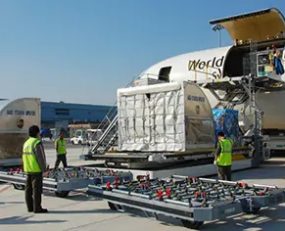
Air cargo has more or less recovered to the pre-pandemic levels of the last quarter of 2019, yet the market is not hugely strong.
The latest IATA (International Air Transport Association) numbers show that “seasonally adjusted cargo-tonne kilometres fell by 2.3% from June to July and were 9.7% lower than the year-before”. Despite this, available cargo capacity increased by 3.6% year-on-year.
IATA said that the underlying market conditions were helped by what it called “the easing of restrictions in China” and reduced disruption in global supply chains. However, it was pessimistic about the impact of high inflation and rising interest rates.
Interestingly the organisation said that much of the benefit of growing trade volumes would benefit container shipping, “which has been growing in line with the global trade”. However, it continues that “air cargo growth has been underperforming, with the gap gradually widening since January”.
One of the problems for the air cargo market is the nature of growth. Export orders in economies such as Germany and the US have been “softening” over 2022, although China is experiencing a spike in exports. Overall, the demand picture is weakening, and many shippers have high inventory levels, resulting in less need to use air freight.
Please see examples in this story: US retail inventory levels suggest lower freight rates – Transport Intelligence (ti-insight.com)
All of this is paralleled by a steady recovery in the quantity of belly-freight re-entering the market as passenger volumes increase. This is obviously reducing freight capacity utilisation and suggests rates will be on a downward trajectory.
Willie Walsh, Director General of IATA, also pointed out that the price of jet fuel remained high despite falls in the price of oil, with the “crack spread” for fuel reaching historic highs. It is unclear why this is because, unlike the diesel market, jet fuel refining capacity should not be constrained. Mr Walsh said that he thought it was due to the speed in the recovery of demand in air traffic generally.
So, judging by this presentation from IATA, the prospect for air freight is one of lower prices, lots of space availability and moderate volume growth in global markets.
Supply chain strategists can use GSCi – Ti’s online data platform – to identify opportunities for growth, support strategic decisions, help them stay abreast of industry trends and development, as well as understand future impacts on the industry.
Visit GSCI subscription to sign up today or contact: Michael Clover for a free demonstration: [email protected] | +44 (0) 1666 519907
Source: Transport Intelligence, 8th September 2022
Author: Thomas Cullen